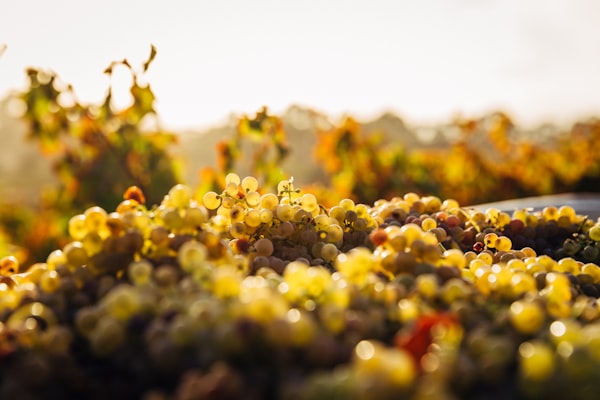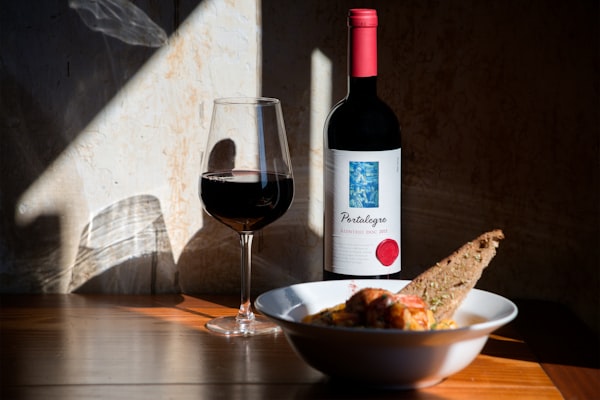Sweet wine with high alcohol content is a popular choice for those who enjoy a rich and decadent taste. These wines are known for their sweetness and high alcohol content, making them perfect for sipping after a meal or as a dessert accompaniment. While many people assume that sweet wines are low in alcohol, there are actually many varieties that have a high alcohol content, ranging from 13% to 20% ABV.
One of the most popular types of sweet wine with high alcohol content is fortified wine. Fortified wines are made by adding distilled spirits, such as brandy, to the wine during the fermentation process. This increases the alcohol content while also adding a unique flavor profile. Some of the most well-known fortified wines include Port, Madeira, and Sherry, which typically have an alcohol content of 15% to 20% ABV.
Another type of sweet wine with high alcohol content is dessert wine. These wines are made from grapes that have been left on the vine longer than usual, allowing them to develop a higher sugar content. Dessert wines can range from light and sweet to rich and syrupy, with alcohol content ranging from 13% to 20% ABV. Some popular dessert wines include Icewine, Muscat, and Sauternes.
Understanding Sweet Wine and High Alcohol Content
Sweet wines are a popular choice for those who prefer a sweeter taste in their wine. However, not all sweet wines are created equal. Some sweet wines have a higher alcohol content than others, which can affect their taste and overall experience.
The alcohol content of a wine is measured by its ABV (alcohol by volume) percentage. Typically, wines with a higher ABV percentage have a higher alcohol content and a drier taste, while wines with a lower ABV percentage have a sweeter taste.
When it comes to sweet wines, the level of sugar in the wine is what gives it its sweet taste. However, not all sweet wines have a low alcohol content. In fact, some sweet wines can have a very high alcohol content, making them a popular choice for those who want a sweeter taste but still want to feel the effects of the alcohol.
There are several types of sweet wines with high alcohol content, including Port, Madeira, Marsala, Sauternes, Icewine, and Sherry. These wines typically have an ABV percentage ranging from 13% to 20%, which is much higher than the average ABV percentage for most wines.
It's important to note that not all sweet wines have a high alcohol content. Some sweet wines, such as Kabinett Riesling or Moscato d'Asti, have a lower ABV percentage and are considered to be sweeter wines.
Overall, understanding the relationship between sweet wine and high alcohol content is important for those who want to explore different types of wine. By knowing which sweet wines have a higher alcohol content, wine enthusiasts can make more informed decisions when choosing the perfect wine for their taste preferences.
The Science Behind Sweet Wine Production
Sweet wines are a popular choice among wine drinkers, and their high alcohol content makes them a favorite for many. The production of sweet wine involves a complex process that requires the right balance of sugar content, fermentation, and winemaking techniques.
The process of making sweet wine starts with the harvest of ripe grapes. The climate and timing of the harvest play a crucial role in the sugar content of the grapes. Grapes that are harvested when they are fully ripe tend to have a higher sugar content, which is essential for the production of sweet wine.
After the grapes are harvested, they go through a fermentation process, which involves the use of yeast. Yeast is responsible for converting the sugar in the grapes into alcohol, which is what gives wine its characteristic taste and aroma. During the fermentation process, winemakers carefully monitor the sugar content to ensure that the wine is not too dry or too sweet.
One of the key factors that determine the sweetness of the wine is the residual sugar content. Residual sugar refers to the sugar that is left over after the fermentation process is complete. Winemakers can control the residual sugar content by interrupting the fermentation process at the right time or by adding sugar to the wine.
Another factor that affects the sweetness of the wine is the winemaking process. Different winemaking techniques can be used to produce sweet wine with high alcohol content. For example, some winemakers use a fine filter to remove the yeast from the wine, which stops the fermentation process and leaves behind a sweet wine with a lower alcohol content.
In conclusion, the production of sweet wine with high alcohol content involves a complex process that requires careful attention to detail. From the harvest of ripe grapes to the fermentation process and winemaking techniques, every step plays a crucial role in producing a delicious and high-quality sweet wine.
Notable Sweet High Alcohol Wines
There are many sweet wines with high alcohol content that are worth noting. Here are a few notable options to consider:
Port
Port is a fortified wine that is typically sweet and has a high alcohol content. It is produced in the Douro Valley in Portugal and is often enjoyed as a dessert wine. Sandeman Fine Tawny Port and Mount Pleasant Vintage Port are two popular options to try.
Madeira
Madeira is another fortified wine that is known for its sweetness and high alcohol content. It is produced on the Portuguese island of Madeira and comes in a variety of styles. D’Oliveiras Madeira and Pellegrino Superiore Reserva are two examples of high-quality Madeira wines.
Sauternes
Sauternes is a sweet white wine that is produced in the Sauternais region of France. It is made from grapes that have been affected by noble rot, which gives the wine a unique flavor profile. Chateau d’Yquem is a well-known producer of Sauternes wine.
Sherry
Sherry is a fortified wine that is produced in the Jerez region of Spain. It comes in a variety of styles, including sweet options like Pedro Ximenez and Cream Sherry. Gonzalez Byass and Lustau are two popular producers of high-quality sherry.
Marsala
Marsala is a fortified wine that is produced in the region surrounding the Italian city of Marsala. It is typically sweet and has a high alcohol content. Florio and Pellegrino are two well-known producers of Marsala wine.
Icewine
Icewine is a sweet dessert wine that is produced from grapes that have been frozen on the vine. This concentrates the sugars and flavors in the grapes, resulting in a rich, sweet wine. Augusta Winery’s Icewine is a popular option to try.
D’Oliveiras Bual Vintage Madeira
D’Oliveiras Bual Vintage Madeira is a sweet wine with a high alcohol content that is produced on the island of Madeira. It is made from the Bual grape variety and is known for its rich, complex flavors.
Overall, there are many sweet wines with high alcohol content to choose from. Whether you prefer port, madeira, sauternes, sherry, marsala, icewine, or another type of sweet wine, there is sure to be an option that suits your taste.
Grapes Used in Sweet High Alcohol Wines
The type of grape used in winemaking plays a significant role in determining the alcohol content of the wine. Grapes with high sugar content produce wines with high alcohol levels. The following are some of the grape varietals commonly used in sweet high alcohol wines:
Red Grapes
- Merlot: This grape varietal is used in making sweet red wines with high alcohol content. Merlot grapes have a high sugar content and produce rich, full-bodied wines with a smooth finish.
- Malbec: Malbec grapes are used to produce sweet red wines with high alcohol content. The wine has a deep color and is known for its fruity and spicy flavors.
- Zinfandel: Zinfandel grapes are used in making sweet red wines with high alcohol content. The wine has a rich, full-bodied flavor and is known for its fruity and spicy notes.
- Sangiovese: Sangiovese grapes are used in making sweet red wines with high alcohol content. The wine has a ruby-red color and is known for its fruity and earthy flavors.
White Grapes
- Moscato: Moscato grapes are used in making sweet white wines with high alcohol content. The wine has a light, refreshing flavor and is known for its floral and fruity notes.
- Chenin Blanc: Chenin Blanc grapes are used to produce sweet white wines with high alcohol content. The wine has a crisp, refreshing flavor and is known for its honey and apricot notes.
- Riesling: Riesling grapes are used in making sweet white wines with high alcohol content. The wine has a light, refreshing flavor and is known for its floral and citrus notes.
- Semillon: Semillon grapes are used in making sweet white wines with high alcohol content. The wine has a rich, full-bodied flavor and is known for its honey and apricot notes.
Other grape varietals commonly used in making sweet high alcohol wines include Cabernet Sauvignon, Pinot Noir, Pinot Grigio, Trebbiano, and Malvasia.
Regions Known for Sweet High Alcohol Wines
There are several regions around the world that are known for producing sweet wines with high alcohol content. These regions include Portugal, Sicily, Spain, California, Germany, Canada, and the Marsala region of Italy.
Portugal is famous for its fortified wine, Port, which is a sweet wine with a high alcohol content of around 20%. Port is produced in the Douro Valley in northern Portugal and is made from a blend of different grape varieties. The wine is fortified with brandy, which stops the fermentation process and leaves residual sugar in the wine, resulting in a sweet taste.
Sicily is another region known for producing sweet wines with high alcohol content. The region is famous for its Marsala wine, which is a fortified wine made from the Grillo, Inzolia, and Catarratto grape varieties. Marsala has an alcohol content of around 18-20% and is available in different styles, ranging from dry to sweet.
Spain is also a major producer of sweet wines with high alcohol content. The country is famous for its Sherry, which is a fortified wine made from the Palomino grape variety. Sherry has an alcohol content of around 15-20% and is available in different styles, including Fino, Manzanilla, Amontillado, Oloroso, and Pedro Ximenez.
California is another region that produces sweet wines with high alcohol content. The state is known for its dessert wines, including late-harvest wines and fortified wines such as Port-style wines. These wines have an alcohol content of around 15-20% and are made from a variety of grape varieties.
Germany is famous for producing sweet wines with high alcohol content, particularly in the Mosel and Rhine regions. The country is known for its Riesling wines, which are available in different styles, including dry, off-dry, and sweet. The sweet Riesling wines have an alcohol content of around 8-12%.
Canada is another country that produces sweet wines with high alcohol content, particularly in the Niagara region. The region is known for its Icewine, which is a sweet wine made from grapes that have been frozen on the vine. The wine has an alcohol content of around 10-13% and is available in different styles, including Vidal, Riesling, and Cabernet Franc.
Finally, the Marsala region in Italy is famous for its sweet fortified wine, Marsala. The wine has an alcohol content of around 18-20% and is made from the Grillo, Inzolia, and Catarratto grape varieties. Marsala is available in different styles, ranging from dry to sweet.
Overall, these regions are known for their unique and delicious sweet wines with high alcohol content. Whether you prefer a fortified wine like Port or Sherry, or a dessert wine like Icewine or Marsala, there is something for everyone to enjoy.
Flavor Profile of Sweet High Alcohol Wines
Sweet high alcohol wines can be a delight to the senses, offering a range of complex flavors and aromas. These wines are known for their sweetness, which can range from mildly sweet to intensely sweet, depending on the type of wine.
In terms of flavor profile, sweet high alcohol wines can offer a range of notes, including peach, apricot, pineapple, pear, plum, figs, and nutty flavors. These wines are often characterized by their rich, full-bodied taste, which can be complemented by notes of almonds, caramel, and other sweet flavors.
Acidity is also an important factor in the flavor profile of sweet high alcohol wines. While these wines are generally sweet, they also need a certain level of acidity to balance out the sweetness and create a well-rounded flavor.
When tasting sweet high alcohol wines, it's common to experience a burst of fruity flavors on the palate, followed by a rich, lingering finish. The sweetness of the wine can be balanced by the acidity, creating a complex and satisfying flavor profile.
Overall, sweet high alcohol wines offer a unique and enjoyable drinking experience, with a range of flavors and aromas that can be appreciated by wine enthusiasts and novices alike.
Pairing Sweet High Alcohol Wines
When it comes to pairing sweet high alcohol wines, it's important to consider the intensity and flavors of both the wine and the food. Here are some general guidelines to follow:
Pairing with Dessert Wines
Dessert wines are typically served with dessert, but they can also be paired with savory dishes that have a sweet component. For example, a Sauternes or late-harvest Riesling can pair well with foie gras or blue cheese. A fortified wine like Port or Madeira can also be paired with a rich chocolate dessert or a nutty cheesecake.
Pairing with Strong Cheese
Sweet high alcohol wines can also be paired with strong cheeses. The sweetness of the wine can balance the pungency of the cheese. For example, a Port or Sherry can pair well with a sharp cheddar or blue cheese. Alternatively, a dessert wine like a Tokaji or a Muscat can pair well with a creamy brie or camembert.
Pairing with Cheesecake
Cheesecake is a rich and creamy dessert that can be challenging to pair with wine. However, a sweet high alcohol wine can be a great match. A fortified wine like Port or Madeira can pair well with a classic New York-style cheesecake. Alternatively, a dessert wine like a Late Harvest Gewürztraminer or a Muscat can pair well with a fruity cheesecake.
Pairing with Coffee
If you're looking for a post-dinner pairing, sweet high alcohol wines can also pair well with coffee. A fortified wine like Port or Madeira can be a great match with a strong espresso or a cappuccino. Alternatively, a dessert wine like a Tawny Port or a Banyuls can pair well with a coffee and chocolate dessert.
Overall, when pairing sweet high alcohol wines, it's important to consider the intensity and flavors of both the wine and the food. Experiment with different pairings to find what works best for your palate.
Storing Sweet High Alcohol Wines
Storing sweet high alcohol wines is crucial to preserve their quality and flavor. Here are some tips to keep in mind when storing these wines.
Wine Bottle
The wine bottle plays a significant role in storing wine. It is essential to choose the right type of wine bottle to ensure that the wine's quality is maintained over time. A dark-colored bottle is preferred as it helps to protect the wine from light exposure, which can cause the wine to deteriorate. Additionally, the bottle should be made of thick glass to prevent damage or breakage during storage.
Store Wine
It is important to store sweet high alcohol wines in a cool and dark place. A wine cellar or a wine cooler is an ideal place to store these wines. The temperature should be maintained between 50-55°F (10-13°C) to prevent the wine from spoiling. High temperatures can cause the wine to age prematurely, while low temperatures can cause the wine to freeze, which can damage the flavor and texture.
Horizontal Storage
Storing wine horizontally is recommended as it helps to keep the cork moist. A dry cork can cause air to enter the bottle, which can spoil the wine. Additionally, storing wine horizontally can prevent sediment from settling at the bottom of the bottle, which can affect the wine's taste and texture.
Avoid Vibrations
Vibrations can disturb the sediment in the wine, which can affect the wine's quality. It is important to store wine in a place where there are no vibrations, such as a wine cellar or a wine cooler. Additionally, it is recommended to avoid moving the wine bottle around too much, as it can cause the sediment to mix with the wine.
Conclusion
Storing sweet high alcohol wines requires attention to detail. Choosing the right wine bottle, storing the wine in a cool and dark place, storing it horizontally, avoiding vibrations, and keeping the wine bottle undisturbed are all important factors to consider. By following these tips, one can ensure that the wine's quality and flavor are maintained over time.
Conclusion
In conclusion, sweet wines with high alcohol content are a great choice for those who enjoy a sweeter taste in their wine. These wines are perfect for pairing with desserts or as a standalone drink.
The top sweet wines with high alcohol content include Pedro Ximénez, Port, Madeira, Marsala, Sauternes, Icewine, and Sherry. These wines have an alcohol content that can range from 15% to 22%, making them a great choice for those who prefer a stronger drink.
It's important to note that while sweet wines with high alcohol content can be delicious, they should be consumed in moderation. These wines can be high in calories and can lead to a hangover if consumed in excess.
When selecting a sweet wine with high alcohol content, it's important to consider the flavor profile and the food pairing. For example, Port wine is a fortified wine that is sweet and pairs well with chocolate desserts. Sauternes, on the other hand, is a dessert wine that pairs well with fruit-based desserts.
Overall, sweet wines with high alcohol content can be a great addition to any wine collection. With so many options to choose from, there's sure to be a sweet wine with high alcohol content that will suit anyone's taste preferences.









Member discussion